Earlier this year I distilled a new “life goal” for myself. I
was driving to work one morning when I saw a young woman running with her dog.
The dog, on a leash, was youngish, tallish, blondish. The dog was the picture
of health: glowing coat and eyes, fluid motion, lolling tongue and big doggy
grin. That damn dog looked so damn happy! Looked like it was loving what it was
doing and could not think a single thing it would rather be doing. My goal: To
look and feel like that dog! Healthy, and completely engrossed in the moment. (And
if that comes with youngish, tallish, blondish, so much the better.)
During our time in
Turkey I have found that, while I have grown no younger and no blonder, the
moments that produce a doggy grin, the moments that I will remember, are
not necessarily momentous. They happen in unexpected places and at odd times
and are made up primarily of small things. Hearing the garrumphing of a green
and gold frog in a valley between cliffs and poplar trees. Watching a religious
ritual 700 years old, primal and moving. Walking barefoot through thermal water
on a white, white hill. Eating a tasty meal at the end of a long day on the
bike when your hunger is very real and your bed awaits you...
Highlights
from central Turkey and the Black Sea coast
5
September, Amasya
We began our day
at the Amasya museum and ended it strolling the embankment in carnival mood.
The museum’s pride is a small bronze figure, dating from the 15th century BC, of
Teshub, the Hittite storm god, with conical hat and almond-shaped eyes. Of
particular interest also to us was a late iron-age ivory backgammon dye. We
strolled the town to lunch under an enormous old pin oak at the railway station
restaurant, and make use of their wifi as our hotel is not connected to the
net; treated ourselves mid-afternoon to a waffle with fruit and ice-cream at a
cafe overlooking the river; and strolled the town again after our siesta and
late dinner. Amasya on a late-summer Friday evening is a lively place. Outdoor
restaurants are packed with diners eating kebab and meatballs under trees dotted
with lights; street traders dispense small cups of hot buttered corn flavoured
with salt or ketchup or mayonnaise; ice-cream in a variety of flavours is a
firm favourite; attractive shops specialise in cold desserts or dried fruits. The
Ottoman houses and Pontic tombs and castle walls on the north side of the river
are neon lit in colours that change from red to purple to blue to white, the
lights reflected in the river below, adding a festive zest to a weekend
evening. We like it here.
8
September, Boğazkale
Absolutely LOVED
the ancient Hittite capital of Hattuşa, occupied some 4000 years ago. We spent
several hours this morning walking the 5km hilly circuit around the ruined city,
which in its heyday was home to over 50,000. The Hittite* kingdom stretched
from Syria to Europe, and “squared up to the Egyptian, Babylonian and Assyrian
empires”. A section of city wall has been recreated. The walls, some of the
thickest in the ancient world and over 6km long, were constructed of timber and
mud brick on stone foundations. The foundations of numerous temples remain, as
do sections of the city gates and a ceremonial tunnel under the wall. It rained
in the night and again as we walked to the site, so we were treated to an
atmospheric morning complete with rainbow, the air fresh and cool. The earliest
known peace treaty was concluded between the Hittites and the Egyptians. On the
site is a large green jade cube, amazingly smooth to the touch, which some say
was a gift from Ramses II... We also visited Yazilikaya, the site of an outdoor
religious sanctuary where the Hittites carved images of gods and kings onto the
rockface.
*Lonely Planet: While
the name may evoke images of skin-clad barbarians, the Hittites were a
sophisticated people who commanded a vast Middle Eastern empire, conquered
Babylon and challenged the Egyptian pharaohs more than 3000 years ago. Apart
from a few written references in the Bible and Babylonian tablets, there were
few clues to their existence until 1834 when a French traveller, Charles
Texier, stumbled on the ruins of the Hittite capital of Hattuşa. In 1905
excavations turned up notable works of art, most of them now in Ankara’s Museum
of Anatolian Civilisations. Also brought to light were the Hittite state
archives, written in cuneiform on thousands of clay tablets. From these
tablets, historians and archaeologists were able to construct a history of the
Hittite empire. The original Indo-European Hittites swept into Anatolia around
2000 BC, conquering the local Hatti, from whom they borrowed their culture and
name. They established themselves at Hattuşa, the Hatti capital, and in the
course of a millennium enlarged and beautified the city. From about 1375 to
1200 BC Hattuşa was the capital of a Hittite empire that, at its height, shared
Syria with Egypt and extended as far as Europe. The Hittites worshipped over a
thousand different deities; the most important were Teshub, the storm or
weather god, and Hepatu, the sun goddess. The cuneiform tablets revealed a
well-ordered society with more than 200 laws. The death sentence was prescribed
for bestiality, while thieves got off more lightly provided they paid their victims
compensation. Although it defeated Egypt in 1298 BC, the empire declined in the
following centuries, undone by internal squabbles and new threats such as the
Greek ‘sea peoples’.
10
September, Ankara
We returned from
our day in this city of 4.5 million footsore, but happy. The wonderful Museum
of Anatolian Civilisations is housed in a restored 15th-century bedesten
(covered market) and displays tools, pottery, jewellery, weapons, religious
artefacts, stone reliefs and much, much more beginning with the Palaeolithic
age and including all the cultures and conquerors that have enriched Turkey’s many
thousands of years of history – Assyrian, Hittite, Phrygian, Urartian, Lydian,
Greek, Roman... Again it was the cuneiform clay tablets that held me
enthralled, some displayed still within the clay envelopes in which they were
delivered to the recipient. The envelopes were sealed twice, once physically,
thus completely enclosing the document within, and once with the identifying
seal of the sender. These seals were carved onto metal, to be either stamped or
rolled onto the clay. Tiny figures and faces and symbols of an unbelievable
detail and delicacy. We lunched within the castle walls high above the city
where restored buildings clustered along steep narrow streets now house
boutique hotels and trendy cafes and souvenir shops. We spent our afternoon at
Atatϋrk’s mausoleum, an enormous and impressive structure housing his tomb and
a museum, testament to the role he played in creating a modern Turkey, and
continues to play. A good day.
11
September, Ankara
Another super
day during which we travelled west of Ankara to the tiny village of Yassihöyϋk,
site of the ancient Phrygian capital of Gordion, to view the Midas Mound. Gordion’s
most famous king was Midas, whose touch turned things to gold; and it was in Gordion
that Alexander the Great cut the Gordion knot in 333BC. Gordion was settled
some 3000 years ago by migrants from the Balkans. The Phrygians buried their
elite in large wooden rooms which were then hidden under tons of rubble and
earth that formed enormous tumuli or burial mounds, in fact sizeable hills.
Around 80 tumuli dot the moonscape around Yassihöyϋk, the largest being the
Midas Mound at 53 metres in height and 300 metres in diameter. The intact tomb
was discovered and excavated in 1957 and today one can walk a lengthy
underground tunnel to view the burial room, the size of a small cottage,
constructed of pine and juniper logs. Inside the tomb was the body of a man in
his 60s and many burial objects including inlaid wood furniture and bronze containers
holding the remnants of a funeral feast. (Modern Midas Touch beer was created
by reverse engineering the contents of the funerary containers.) Despite its
name, the tomb is unlikely to be that of Midas and may in fact be that of his
father Gordius. At the museum across the road is the world’s oldest mosaic
pavement.
14
September, Samsun to Alaçam, 79km
Today, en route
Alaçam, we took a break in the city of Bafra. Thirty years ago I spent one
night in Bafra, then a small town. In search of dinner, I found I was the only
foreigner in town and the only woman on the streets after dark. The first restaurant
I came to proved to be large, well-lit and extremely popular and I was somewhat
daunted when nearly 100 pairs of male eyes swivelled my way. Backing out, I opted
instead for a tiny empty lokanta (restaurant) just across the road. I sat at
the back at one of only six tables and there, over my dinner, caught up my
diary and wrote a long letter to friends. When I looked up I discovered that
the window of the place across the road had been wiped dry of its condensation
and many men were clustered together where they could see into the lokanta, and
that all the other tables at ‘my’ lokanta were fully occupied by men obviously come
to look me over. As they had also all ordered a meal, I had a little chuckle to
myself, thinking that I could hire myself out as an improver of business. The
lokanta proprietor seemed to agree with me. When it came time to pay, he
refused to take any money from me, acknowledging with a grin our shared but
non-verbal understanding of what had happened on this memorable night! On the
seafront west of Samsun’s town centre we came across the statue of an Amazon,
that warrior woman from Greek mythology. Did you know the Amazons were thought
to have lived on the Black Sea coast? I did not.
17
September, Sinop to Ayancik, 64km
Today we toiled
and tumbled over one hill or headland after another making for a tough but
lovely ride. At times we could see the sea, often dropping into bays; at times
we cycled embraced by densely wooded hills, trees and ferns and bushes beside,
below and above us. We cycled the old coast road, a narrow strip that is
ungraded and runs through much more rural countryside than we have been treated
to along this coast since Trabzon. A dog “incident” came very close to
unsaddling me. I think perhaps I woke the pooch from his slumber and that he
was more startled than actively aggressive. Whatever the case, he leapt into
the road barking and so startled me that I screamed, and slammed on my brakes,
trying to dismount and put the bike between us all at the same time. As I was
travelling fast on a slight decline, my unprecedented reaction literally lifted
the back of my bike around 30cm off the ground, panniers and all. Both Charl,
viewing the entire incident from behind me, and I thought the bike would flip
and down me. But I managed to hold it together, while the dog, already calm,
pottered on home. Charl and I swopped saddles for the day and I was less
uncomfortable, though he was more so (generous man). Ayancik is a town of
13,000. We were surprised to find that the Öğretmenevi
and three of their five hotels were full, but are relatively comfortably
established in a small apartment-style hotel with a balcony overlooking the
ocean.
26
September, Kurucaşile to Amasra, 48km
Today was our
last day on the bikes ... in Turkey. After a month in Istanbul we fly to
Bangkok to cycle Laos, Vietnam and Cambodia ... By the time we reached Amasra
we had cycled 4,689kms since getting on the saddles in Yalova; considerably
fewer than we had optimistically planned, but a goodly number nonetheless.
Today’s was a tough ride, the headlands dropping too steeply into the sea for a
road to be cut into them, the 010 taking us, therefore, further inland with
lengthy climbs at 9% and 10%. We were grateful for equally long declines and
some easier sections and a long tunnel beneath one of the hills with which the
route was populated. Our last climb of the day rewarded us with a spectacular
view of Amasra and its harbour. In the harbour, not only the anticipated
fishing boats, but an unexpected submarine, quiet and black beside its dock.
Then down we swooped into the charming town, feeling good on the whole about
our Turkey adventure. The cycling had been harder than anticipated for longer
than hoped, but the commensurate sense of a challenge met, even if not
entirely, is satisfying indeed and our improved physical fitness a real
plus.
Read more daily snippets here
Read about our previous
trips (Burma, Vietnam, Rajasthan, etc) here
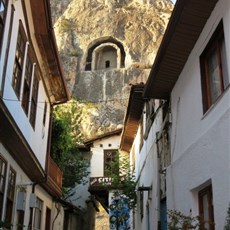
Amasya
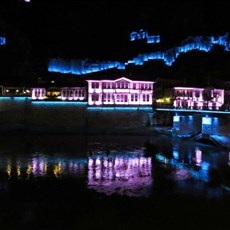
Amasya

Amasya
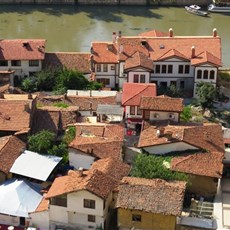
Amasya
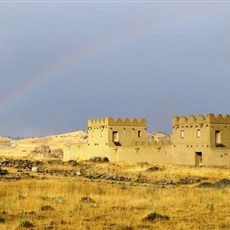
Hattuşa

Hattuşa

Hattuşa
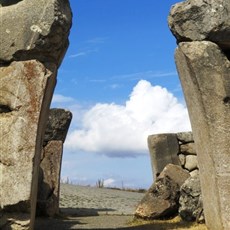
Hattuşa
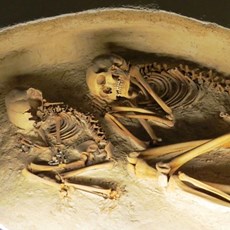
Museum of Anatolian Civilisations, Ankara
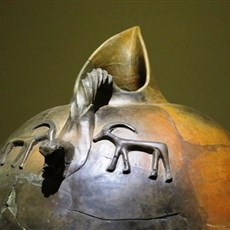
Museum of Anatolian Civilisations, Ankara
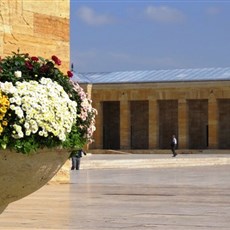
Anit Kabir, Atatϋrk’s mausoleum, Ankara

Anit Kabir, Atatϋrk’s mausoleum, Ankara
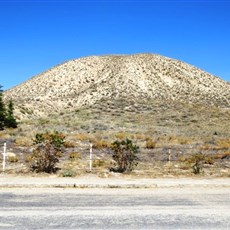
Midas Mound, Gordion
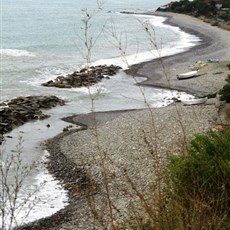
Between Sinop and Ayancik

Amasra